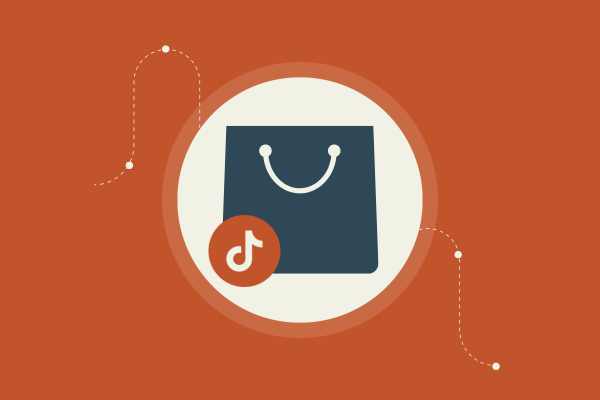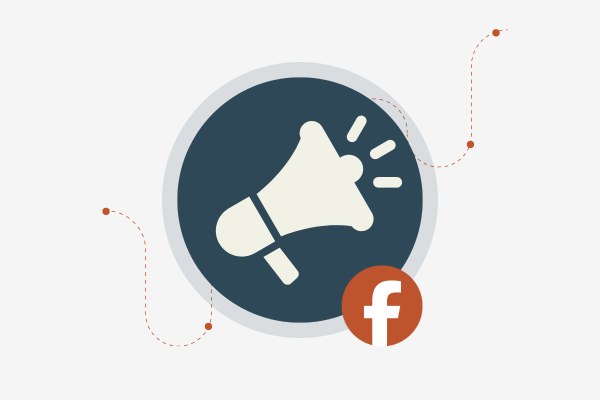What Does Internalizing External Costs Mean for Your eCommerce Business? Unlock Hidden Profits
So, what does internalizing external costs mean for your eCommerce business? Imagine taking into account all the hidden costs that your business activities create, like environmental impacts or social costs. Internalizing these costs means your business would factor them into your pricing or operations, making you more responsible for the effects your business has on the world.
Why does this matter? Well, it directly affects how your business operates in the market. You can reduce risks from market failures and show your customers that you care about more than just profits. Plus, it's about resource allocation and using them wisely.
Recognizing these hidden costs isn't just a headache; it's a game-changer for your business. It ensures compliance and aids in creating a sustainable business model. You'll learn what mechanisms can help internalize these externalities and how to avoid market failures while doing so.
Key Takeaways
Understanding hidden costs is crucial for eCommerce.
Internalizing costs can enhance market position.
Responsible practices lead to sustainable growth.
Fundamentals of Internalizing External Costs
When your eCommerce business steps into external cost territory, it's crucial to consider both social and environmental impacts not factored into market prices. By internalizing these costs, you align your operations with sustainable practices and future-proof your business.
Demystifying Externalities
Alright, let's break this down. Externalities are like the hidden costs or benefits of your business. For instance, if your shipping trucks pollute, that's a negative externality. On the flip side, using eco-friendly packaging might be a positive one because it benefits the environment.
Now, external costs are what we focus on—stuff like pollution and resource depletion. They're the side-effects not reflected in your prices. And ignoring them? That can hurt your business image and bottom line.
Why care? Because modern markets and savvy customers do. Regulators might step in with economic policies if companies don't self-regulate. Understanding externalities isn't just eco-conscious; it's about better position in the market.
The Internalization Process Explained
Internalizing is about making sure those external costs don't hang outside your business's walls. Here's the process. You tally up the environmental and social costs linked to your operations. Then, adjust your prices or practices accordingly.
Think of it like this: if your packaging process creates waste, then either reduce it or cover the cost. Maybe through a small price hike or efficiency improvement. The idea is to get your customers involved saying, "Hey, this is our real impact."
To start, identify your business's main externalities. Sure, taxes or fees might make these official, but proactive changes help you play ahead. In the long run, this boosts your image and aligns you with sustainable trends that today's market respects.
Why It Matters for eCommerce
Understanding external costs can give you a massive edge in the eCommerce game. This knowledge impacts your pricing strategy, your sustainable practices, and your path to long-term profits. Let's dive into why it can't be ignored.
Shifting Market Prices
When you internalize external costs, you're playing a different ball game. These costs impact everything from your product's price tag to its true cost in the market. If you eat these costs yourself or find a clever way to pass them on, it shifts the whole pricing strategy. Market prices reflect more than just production costs—they include environmental and social impacts too. It keeps competitors on their toes and makes your pricing sustainable. In the end, it's not just about being cheaper, it's about being smarter. Know what goes into your price, and you control the market. This approach makes your business not only competitive but also conscious of its broader economic activity.
Sustainable Practices in Business
Sustainability isn't just a buzzword. It's an efficiency booster and a customer magnet. By focusing on sustainable practices, you're taking a stand on social welfare and environmental responsibility. Internalizing those external costs pushes you toward minimizing waste and optimizing resources. It’s about doing good and looking good—because customers notice. You're not just selling products; you're selling trust and responsibility. Businesses that minimize their negative impact resonate more with today's values-driven consumers. They aren't just proud of their products; they’re proud of the practices behind them. When you align with these practices, you're showing that your business cares about more than just the bottom line.
Long-Term Profitability and Social Welfare
Thinking long-term means thinking about how your business decisions affect the world. Profitability isn't just about today's dollars. It's about setting up for tomorrow’s success, too. Internalizing costs that might otherwise hit society keeps you aligned with social welfare goals. You’re future-proofing by considering more than just your immediate profits. Companies ignoring these principles play catch-up while you breeze ahead. The balance between profits and ethical responsibility is what separates the leaders from followers. It's not just what you sell, but how you sell it that dictates your legacy. Secure that by prioritizing social welfare alongside profits.
Recognizing the True Costs
You run an eCommerce business. But do you really know what all the costs are? We’re not just talking about production and shipping here. There’s a whole world of costs you might miss—pollution, environmental hits, and the social impact of your operations.
Pricing Pollution and Environmental Degradation
Your products don’t just cost money to make and ship. They could be costing the planet too. Pollution is a big deal. Imagine you’re releasing waste into the air or water during production. That’s a cost you’re not seeing on your balance sheet. It's an external cost hidden like a ghost haunting your operations.
How much water pollution or air degradation is too much? Regulators might make you pay for it someday. Think about the real price tag of what's coming out of your factories. Are your suppliers breaking down ecosystems just to make a buck? That’s a hefty price the world pays. Don’t be caught off guard. Understand those hidden costs and how they can catch up with you.
Social and Environmental Costs in Decision-Making
Now that you know these costs exist, think about them when making business decisions. Are those cheap parts really worth it if they harm communities or the environment? We’re talking about social costs here. Cheap wages might save you cash now, but what's it costing the workers' health or their quality of life?
Every time you decide how to make or source a product, the social and environmental costs should matter. Invest in cleaner technology or fair wages. This doesn’t just help the planet. It builds goodwill and customer trust. You gain reputation points that are worth more than saving a few bucks. So, are you thinking about the impacts of your choices? You should be.
Mechanisms for Internalization
Internalizing external costs in your eCommerce business isn't just important; it's vital for long-term success. You need to understand the mechanisms that can help make this process more practical.
Taxes and Subsidies as Financial Incentives
Taxes and subsidies are powerful tools in your arsenal. They work by nudging your business choices in the right direction. Taxes make bad behaviors costly. Let's say your business produces waste that harms the environment. You get slapped with a tax. Suddenly, going green looks better, right?
On the flip side, subsidies reward good behavior. Shift to eco-friendly packaging? There might be a subsidy waiting for you. These financial incentives can change how you operate, drive costs down, and boost your attractiveness to eco-conscious consumers.
Bottom line: Both taxes and subsidies are crucial for steering your business toward responsible practices.
Government Intervention on Negative Externalities
Government intervention can feel like a pain. But it’s often needed for tackling negative externalities. Think pollution or resource depletion. They slap on regulations that push your business to reduce these harmful impacts.
Maybe they demand stricter controls on your waste disposal. Or they require you to use specific materials that are less harmful. You might not like it, but it pushes your business to become more sustainable.
This intervention acts as a safety net. It ensures businesses don’t cut corners at the expense of the environment or society.
Supporting Positive Externalities
Supporting positive externalities brings benefits you can't ignore. Positive moves like solar panels or renewable energy systems don’t just save the planet—they save you money, too.
Governments might offer grants or reduce taxes to businesses embracing these changes. You’re not only helping your business but are also earning a good reputation.
Consumers love companies that do good. Your business can tap into this goodwill by creating benefits that stretch beyond your own doors. The more positive impact you have, the more attractive you become to a loyal customer base.
So, why wait? Jump on the train and make those positive impacts work for your bottom line.
Impact on Resource Allocation
When you internalize external costs into your eCommerce business, it shifts how you allocate resources. You push towards adopting cleaner tech and bolstering innovation in intellectual property.
Incentives for Cleaner Technologies
Imagine you're running an eCommerce site. You want to go green but don't know where to start. Internalizing costs pushes you to invest in cleaner technologies. Why? Because it makes economic sense. Cutting emissions could mean using renewable energy sources.
This transition not only saves on energy bills but also boosts your brand image. Customers love a green story. They feel good about buying from you, knowing you're playing your part in saving the planet.
Implementing cleaner tech can set you apart from the competition. You become a leader in sustainability and innovation. This makes you a preferred choice for eco-conscious buyers. Plus, you might even qualify for governmental incentives and grants.
Intellectual Property and Innovation
Now, think about innovation. By internalizing these costs, you're driven to tweak your business strategy. You could develop new intellectual property focused on efficiency. Patents or new software solutions that make your processes leaner.
Innovation keeps you at the forefront of the market. When you hold unique patents, it prevents others from copying your strategy. That’s a competitive edge in your pocket.
Investing in intellectual property protection ensures that your innovations are safeguarded. It prevents revenue loss from imitators trying to cash in on your ideas. This cycle of innovation can lead to more efficient resource use and market dominance.
Market Failures and Compliance
Understanding market failures and how to comply with regulations is crucial for your eCommerce business. This section dives into handling market failures, the importance of property rights, and maintaining business accountability.
Handling Market Failures
Market failures happen when the market can't allocate resources efficiently. They can be a real headache. Picture this: your business is booming, but external costs like pollution are hurting society.
To tackle this, you need to internalize those costs. This means adjusting prices so they reflect true social costs. Think of pollution taxes or fees to offset negative impacts. You're not just complying with laws; you're also protecting your brand and reputation.
By reducing transaction costs, you can operate smoother. Keep an eye out for inefficiencies and fix them. This helps you stay competitive and improves customer satisfaction. Addressing public goods is also key. Make sure everyone benefits without depleting resources.
The Role of Property Rights
Property rights are vital in reducing market failures. They clarify who owns what and who benefits from resources. When everyone knows their rights, conflicts shrink, and efficiency skyrockets.
In eCommerce, clear property rights lower transaction costs. This means fewer disputes and a smoother market. Property rights help align private incentives with social goals, too. When businesses know they benefit from good behavior, they act responsibly.
Encourage your team to respect intellectual property. It builds trust with partners and customers. Secure your digital assets and make sure you're not stepping on anyone's toes. By doing this, you'll protect your business and encourage growth.
Compliance and Business Accountability
Compliance keeps you in check. It's not just about avoiding fines. It's about ensuring your business operates fairly.
Following rules around market failures can be tricky, but it's crucial.
Set up a compliance team or hire experts to keep you informed of changing laws.
Accountability helps you avoid risks and unforeseen costs. Your business won't only stay legal; it'll thrive in a competitive landscape.
Transparency is king. Communicate your compliance efforts to customers and stakeholders. It boosts trust and loyalty.
When you're upfront about your practices, it reflects positively on your brand.
Remember, accountability isn't just about staying legal. It's also about doing what's right, boosting your reputation, and ensuring long-term success.







